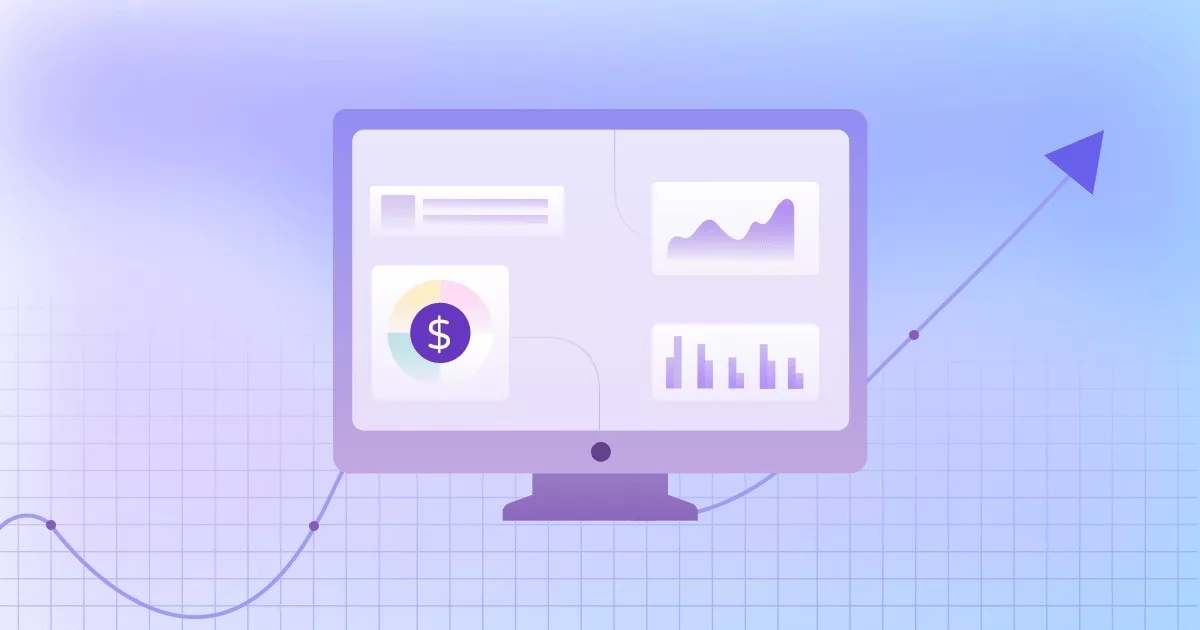
As the saying goes, “failing to plan is planning to fail.” Nowhere is this more true than in financial management, where a lack of planning can lead to costly mistakes and missed opportunities. One crucial aspect of financial planning is budget forecasting, which involves using data analysis to predict future financial outcomes and create a plan to allocate resources accordingly. By looking at past trends and your current financial situation, you can get a good idea of what’s coming down the road and plan accordingly.
In this blog post, we’ll delve into the basics of budget forecasting, including its benefits, common techniques, and best practices for success. Whether you’re just starting out in financial management or are looking to sharpen your skills, understanding budget forecasting is a crucial step toward achieving your financial goals. So without further ado, let’s get started!
What Is Budget Forecasting?
Budget forecasting is a financial planning process that involves estimating future income and expenses based on historical data and other relevant factors. It helps individuals and businesses create a financial plan and allocate resources effectively by predicting future cash flows, profits, and losses. Essentially, budget forecasting is a way to anticipate and plan for financial success, whether you’re trying to save for a big purchase or manage a business’s finances.
Budget Vs. Budget Forecast: What’s the Difference?
A budget is like a plan you make to keep your spending in check. It’s basically a list of how much money you expect to make and spend over a certain period, like a month or a year. You use a budget to make sure you’re not overspending and to keep track of your finances.
A budget forecast, on the other hand, is like a sneak peek into your financial future. It’s an estimate of how much money you might make or spend beyond the budget period. So if your budget covers the next month, a budget forecast might predict what your finances will look like for the next six months or a year. You use a budget forecast to plan for big expenses, like a vacation or a home renovation, or to prepare for unexpected costs.
In a nutshell, a budget is a plan for right now, and a budget forecast is a prediction for the future. Both are important for keeping your finances in check and making sure you’re prepared for whatever comes your way.
Importance of Budget Forecasting
Budget forecasting provides a roadmap for financial success. It is an essential tool for financial management for several reasons:
1. Planning
Budget forecasting helps individuals and businesses plan for future financial needs and opportunities. By predicting future cash flows, profits, and losses, they can make informed decisions about how to allocate resources and prepare for potential challenges.
2. Control
Budget forecasting helps individuals and businesses maintain financial control by ensuring that they stay within their financial means. By monitoring expenses and revenues, they can avoid overspending and manage their finances more effectively.
3. Decision-making
Budget forecasting helps individuals and businesses make informed financial decisions. By having a clear picture of future cash flows and expenses, they can determine whether to make investments, expand operations, or pursue other financial opportunities.
4. Communication
Budget forecasting can also help individuals and businesses communicate financial information to stakeholders, such as investors, lenders, or employees. By providing a clear financial plan, they can build trust and confidence with these groups.
How to Create a Budget Forecast
Here are the steps to creating a budget forecast:
1. Gather historical financial data
Collect financial records and data from previous years to identify trends and patterns. You can review your bank and credit card statements for the past several months, tracking all income and expenses. This will help you identify trends and patterns in your spending habits. You can also review past tax returns, pay stubs, and any other financial documents to get a more comprehensive understanding of your income and expenses. Additionally, you can use budgeting apps or software that automatically tracks and categorize your expenses to make the process easier.
2. Identify and analyze relevant factors
Consider external factors that could impact your financial forecast, such as market trends, economic conditions, or industry developments. Use this information to adjust your forecast as needed. For example, if you own a business or invest in the stock market, you may need to consider factors such as interest rates, inflation, and changes in consumer demand when forecasting your income and expenses. Additionally, changes in the job market or economic conditions can affect your employment or investment income. Natural disasters or other unexpected events can also impact your expenses or income. To account for these external factors, it is important to regularly monitor news and economic reports, as well as any industry-specific information that may be relevant to your situation. This information can help you make informed decisions about your finances and adjust your budget forecast accordingly to reflect any potential changes or uncertainties.
3. Determine your revenue sources
Estimate your income based on expected sales, client payments, or other sources of revenue. To do this, you can review your sales history, analyze market trends, assess your current business activities to determine their contribution to your revenue, and consider new revenue streams. These could be sources of income like primary job, secondary job, investments, rentals, retirement income, government benefits, and other sources. Estimate how much income you expect to earn from each source realistically and conservatively to avoid overestimation.
4. Estimate your expenses
Identify all of your expected expenses, including fixed and variable costs, such as rent, salaries, supplies, and utilities. To estimate your expenses, review your historical expenses, categorize them, and consider external factors like inflation and changes in the market, etc. Categories may include housing expenses, transportation expenses, food expenses, debt payments, and personal expenses. Use your past spending patterns and adjust for changes in your circumstances, such as a new job or upcoming expenses. It’s important to be realistic and conservative in estimating expenses to avoid overspending and ensure that your budget is feasible.
5. Calculate your net cash flow
Subtract your total expenses from your total revenue to determine your net cash flow. This will give you an estimate of the amount of money you have left over at the end of the period. If your net cash flow is negative, you will need to adjust your expenses or increase your income to achieve a balanced budget. Calculating your net cash flow helps you to understand your financial situation and make informed decisions about spending and saving.
6. Review and adjust your forecast
Once you have created your forecast, review it regularly to identify any changes or adjustments that need to be made. Consider updating your forecast based on actual results to improve accuracy over time. To review and adjust your forecast for a budget, compare actual spending and income with forecasted amounts, identify areas of over or underestimation, and adjust future forecasts accordingly. Look for areas where expenses can be reduced or income can be increased to create a balanced budget. Regularly reviewing and adjusting your budget forecast is important to ensure you stay on track with your financial goals and have a clear understanding of your financial situation.
Conclusion
Budget forecasting is an absolute game-changer when it comes to financial management. By predicting your future financial outcomes and creating a plan to allocate your resources, you can avoid nasty surprises and make smart financial decisions. It’s like having a secret weapon in your pocket!
Whether you’re running a business or managing your personal finances, budget forecasting is a crucial tool for achieving your long-term goals and building financial stability. Just remember to review and adjust your forecast regularly based on actual results to make sure you’re on track.
So don’t let your finances run wild—give budget forecasting a try and take control of your financial future!
FAQs
1. Is the budget prepared after the forecast?
Yes, typically, you would prepare your budget after completing a budget forecast. Creating a budget after a budget forecast can help you make informed financial decisions and achieve your financial goals. By using the forecast to guide your budget planning, you can prepare for potential challenges, seize opportunities, and maintain financial control.
2. What is the difference between budget forecast and projection?
Budget forecasting typically involves estimating future income and expenses based on historical data and other relevant factors. It is a way to anticipate and plan for future financial outcomes, and to create a plan to use your resources effectively.
Projection, on the other hand, refers to a more general estimate of future financial outcomes. It may be based on less detailed data than a budget forecast and may not involve as much analysis or planning.
3. How do you ensure a budget is accurate?
To ensure a budget is accurate, gather reliable financial data, categorize expenses, use realistic estimates, monitor actual vs. projected results, review and adjust regularly, and seek professional advice if needed. This will help you create an effective budget and use it as a tool for financial management and decision-making.





